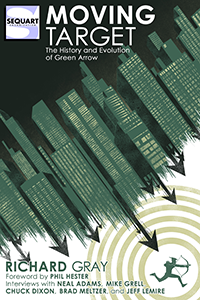Episodes that delve into the past are a dangerous business. They tread the same fraught ground that prequels tread, trying to find enough compelling, new story to justify an examination of a time that the series consciously chose to skip. Making the show’s universe seem too small by tying all the characters together before they “actually” met, an inability to surprise as the endpoint for the sequence is already known, and a tendency to foreshadow events that we’ve seen too heavily are just a few of the common mistakes these kinds of episodes make, and “The Return” falls into almost every one of these traps.
It’s mildly surprising that “The Return” fails as often as it does considering the fact that Arrow deals in flashbacks just about every week. While those flashbacks have ranged in interest depending on the episode or season they’re a part of, they’ve never been telling us a story we already knew. The audience understands the broad outline of Oliver’s transition from spoiled billionaire to superhero, but the specifics of it and the length of time he spent away from Starling City allowed the writers lots of creative license for their story in the past.
The problems with this week’s episode emerge from Oliver’s return to Starling City during a flashback and before his ultimate return at the start of the series. This causes some obvious problems, such as Oliver’s inability to interact with any of the other regular cast members during these scenes since it would violate the story that’s already been told. The issue here is that the writers don’t try to avoid these readily obvious pitfalls, attempting to avoid them with on-the-nose dialogue and appearances from just about every regular actor on the series in scenes that amount to little more than Oliver staring at them while desperately wanting to return to his old life.
This is what leads to the real problem of these scenes, they don’t tell us anything new about the characters or their stories. Everything we see here plays out exactly as a viewer would have expected it to based on the information we already had. We know Thea ran into trouble with drugs, we know Quentin Lance struggled with alcoholism, we know that Laurel and Tommy started to date, and we know that Oliver was remorseful about the life he led prior to being stranded on the island. Nothing here illuminates the characters or their journeys, which means all the audience is left with are characters joking about how Oliver’s hood could never hide his identity or that his murder of a drug dealer might have been the work of a “vigilante.” Needless to say all of this on the nose foreshadowing falls instantly flat.
Luckily, while the majority of this episode dives deep into Oliver’s brief return to Starling City the remainder of it brings back Slade Wilson once Malcolm Merlyn sets him loose on the island as a training exercise for Thea and Oliver. It’s hard not to get excited about Slade Wilson being thrown back into the mix, if only because Manu Bennett is so very good in the role and left such a remarkable impression on the series during its second season. Getting a chance to see Oliver and a newly trained Thea square off against him is more than a little enticing.
What ends up being more thrilling though are the scenes where Oliver and Thea bond. Stephen Amell and Willa Holland have always had strong chemistry together, and finally letting Thea in on Oliver’s secret identity has opened up a world of new possibilities for the two characters. Seeing the brother and sister work together is incredibly satisfying, and it’s more than a little amusing to find out that Arrow’s version of familial bonding can include a dislocated shoulder.
These scenes work as well as they do because they lay out new and exciting avenues to explore. Thea is likely to be much more effectively utilized now that she doesn’t have to be isolated from the rest of the main cast and watching her fit more naturally into the world of the show is engrossing. Unlike the scenes in the episode’s flashback portion which mostly just rehash old conflicts and developments the series has long since moved past, the modern day sequences point towards what is unknown. It’s not hard to guess which of these prospects is more engaging. “The Return” works at times, but it gets in its own way more often than not. The strongest portions of the episode are given the shortest amounts of screen time while the worst elements dominate most of the proceedings. Hopefully, this will be one of the last extended visits to the past of Starling City, it’s a much more enjoyable place in the modern day.


























































